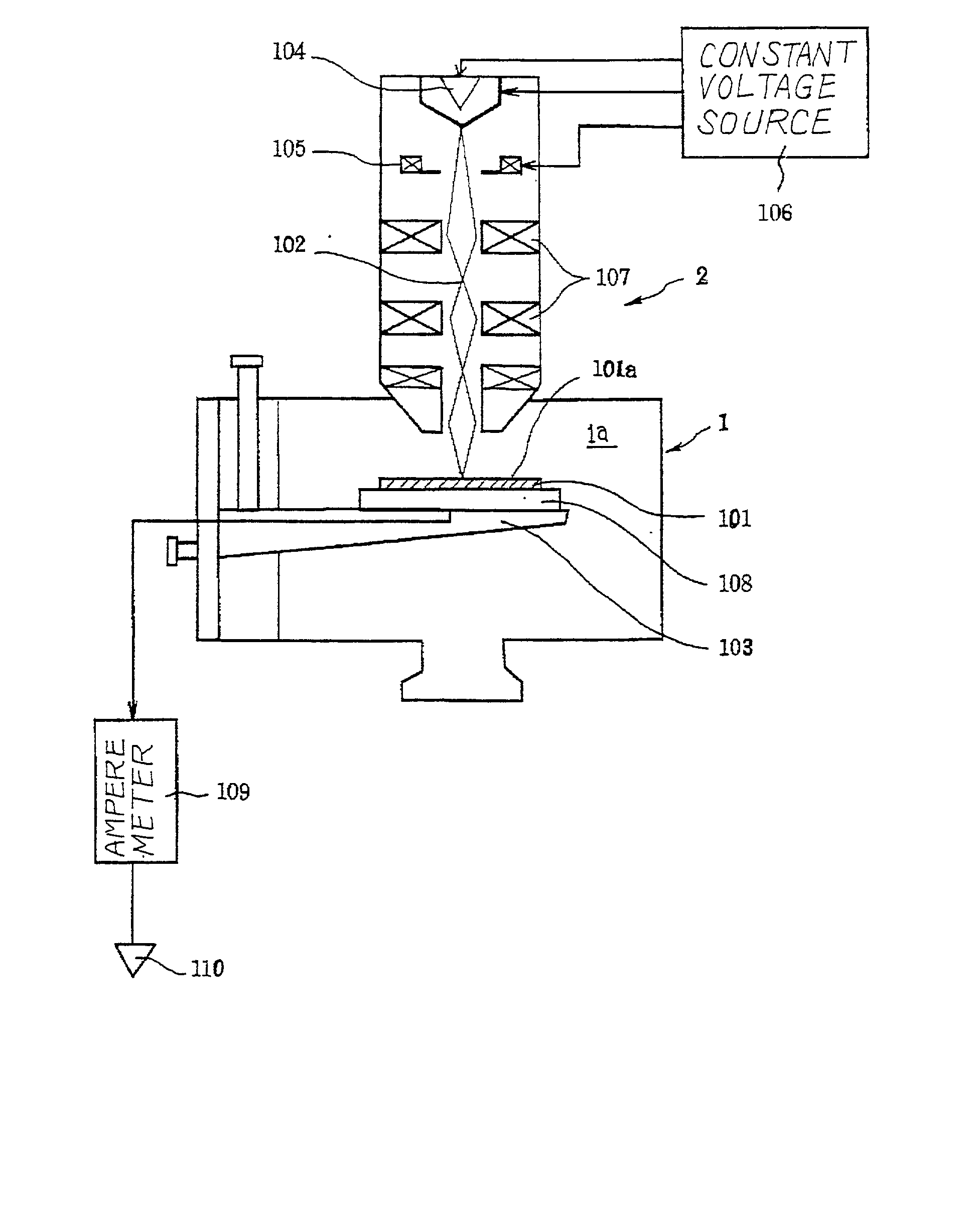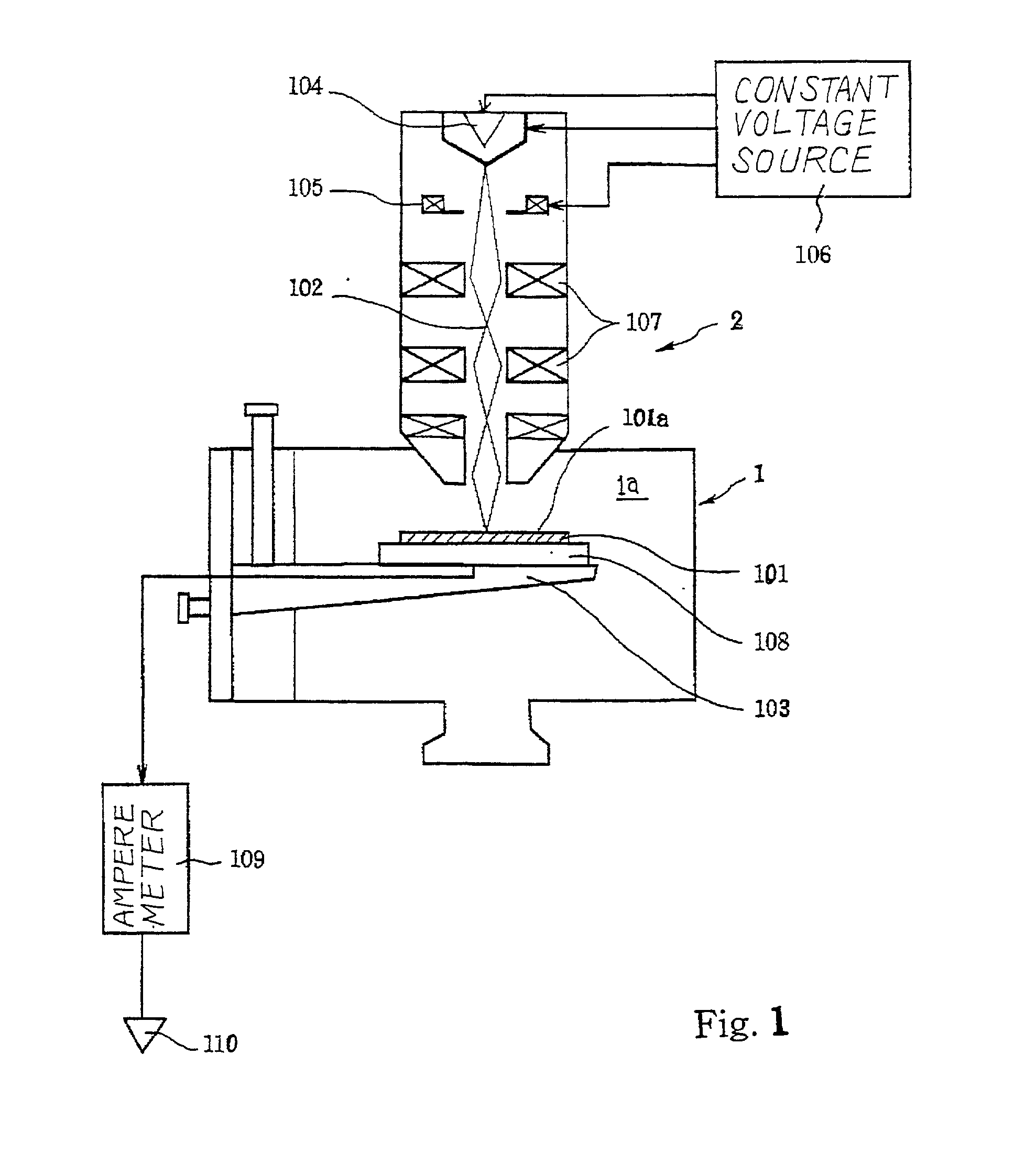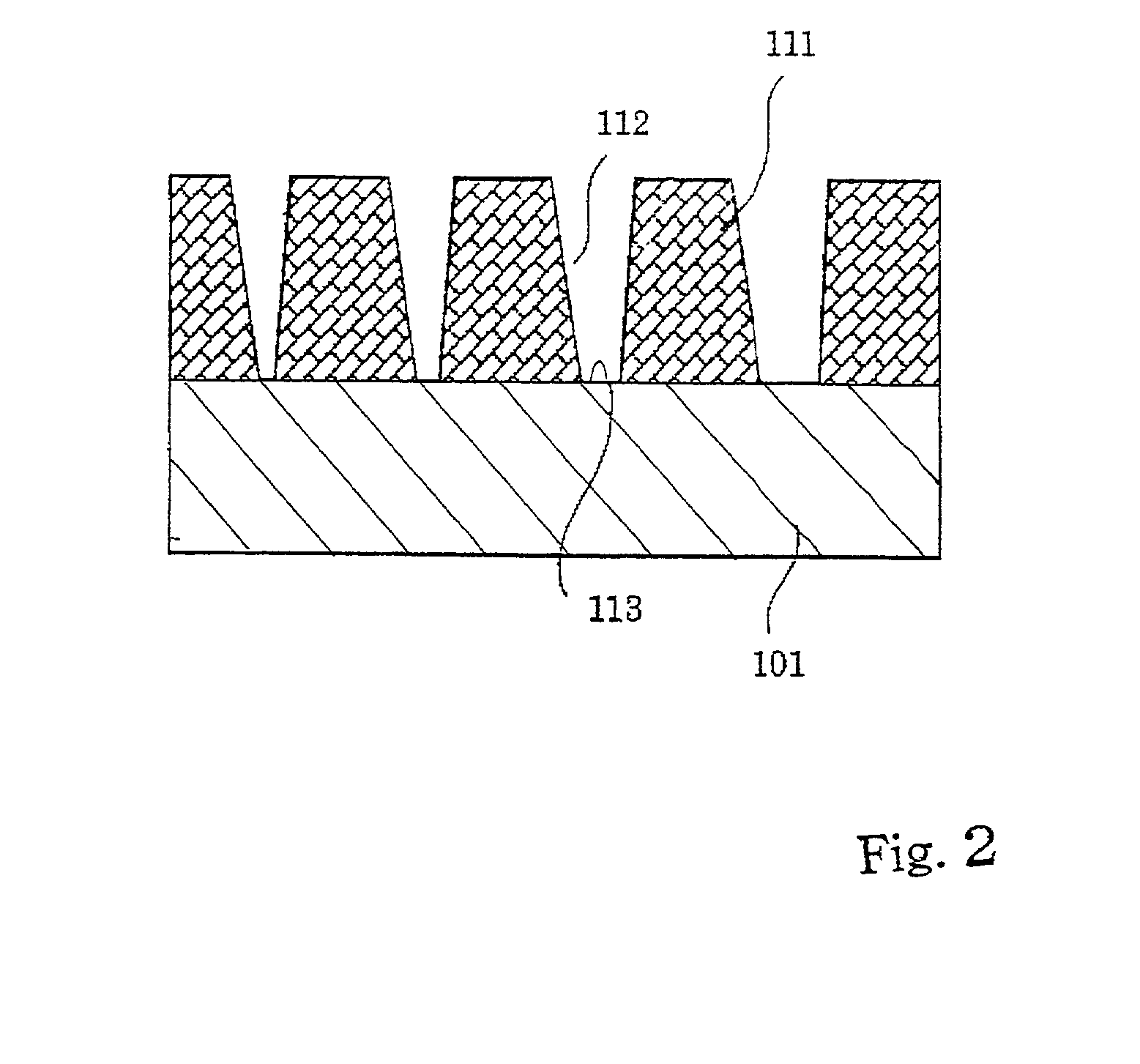Surface contamination analyzer for semiconductor wafers, method used therein and process for fabricating semiconductor device
a surface contamination analyzer and semiconductor wafer technology, applied in semiconductor/solid-state device testing/measurement, individual semiconductor device testing, instruments, etc., can solve the problems of reducing production yield, and affecting the quality of semiconductor devices
- Summary
- Abstract
- Description
- Claims
- Application Information
AI Technical Summary
Benefits of technology
Problems solved by technology
Method used
Image
Examples
Embodiment Construction
[0088] The inventors investigated the effects of the fabrication process containing the surface contamination analysis. The inventors prepared two 8-inch silicon wafers. Silicon oxide was thermally grown to 10 nanometers thick on the major surfaces of the silicon wafers, and, thereafter, the two silicon wafers were left in the clean room for a week. One of the silicon wafers, i.e. the first silicon wafer was assumed that the negative answer was given at step S12, and the other silicon wafer, i.e., the second silicon wafer was assumed that the positive answer was given at step S12.
[0089] The second silicon wafer was investigated at step S13. The surface contamination was serious, and the answer at step S14 was given affirmative. With the positive answer at step S14, the second silicon wafer was cleaned through a series of cleaning steps using water solution containing sulfuric acid and hydrogen peroxide, water solution containing ammonia and hydrogen peroxide and diluted hydrofluoric...
PUM
| Property | Measurement | Unit |
|---|---|---|
| acceleration energy | aaaaa | aaaaa |
| beam current | aaaaa | aaaaa |
| beam current | aaaaa | aaaaa |
Abstract
Description
Claims
Application Information
 Login to View More
Login to View More - R&D
- Intellectual Property
- Life Sciences
- Materials
- Tech Scout
- Unparalleled Data Quality
- Higher Quality Content
- 60% Fewer Hallucinations
Browse by: Latest US Patents, China's latest patents, Technical Efficacy Thesaurus, Application Domain, Technology Topic, Popular Technical Reports.
© 2025 PatSnap. All rights reserved.Legal|Privacy policy|Modern Slavery Act Transparency Statement|Sitemap|About US| Contact US: help@patsnap.com



